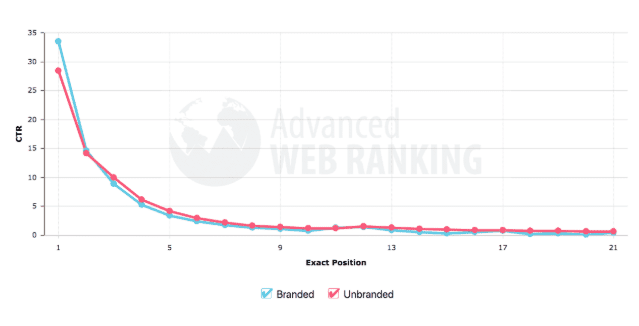As the saying goes, the best place to hide a dead body is on the second page of Google. And it’s because only 0.78% of Google searchers click page 2 results. So this tutorial is all about higher rankings and especially getting you off that second, third, or tenth page.
Now, before we get started, it’s important to note that in order to get the most out of this tutorial, your website and content should meet a certain level of quality. Generally speaking, your site should meet the following criteria:
- Mobile-friendly
- Load decently fast
- Have clear navigation and UX
- Be secure using HTTPS
- Be free of other glaring technical
SEO issues - Your content should be well written
Not only are some of these direct Google ranking factors, but the process that I’m about to share with you will produce much better results if your website is up to scratch. Now, I’m assuming you have existing pages that are targeting keywords. Alright, so here’s the entire process as a flow chart.
Step 1: Check the Strength of the Competition
With any battle, you need to know who you’re up against. And since we want to rank on the first page of Google, your competition is obviously going to be the top 10 results.
Now, at this stage, we just want to do a quick spot-check to see if the websites ranking for this keyword are out of our league. So let’s say you have a relatively new SEO blog and you want to rank for “SEO.” You’ll see that the top pages are well-known brands like Moz, Search Engine Land, Wordstream, Backlinko, and Google.
Chances are, you probably won’t be able to compete anytime soon. Whereas something like “affordable
Step 2: Look at the Website Authority
You can use Ahrefs metric called Domain Rating or DR or Moz’s metric Domain Authority or DA. These represent the overall strength of a website’s backlink profile. Now, while I don’t use this as the main metric to gauge ranking difficulty, it can work well to spot check the relative “strength” of a brand from an
If you’re not an Ahrefs user, you can use the free Website “Authority” Checker. First, enter your domain and you’ll see a DR score. Mark that down. Then you can use it to check the Domain Rating for the top 10 ranking websites. You can also install Mozbar into your browser and check the DA of your website for free.
If you have an Ahrefs account, just go to Keywords Explorer and enter your target keyword. As you can see here for the keyword “SEO,” all of the websites’ Domain Ratings are quite high. So if your DR is let’s say 30, then you probably won’t be able to compete.
As for the keyword “affordable SEO services for small business,” you’ll see Domain Ratings ranging from 6 to 86. So for that DR 30 site, I’d say it’s well within your wheelhouse. If you’ve chosen a keyword that’s too competitive now, go back to keyword research.
And if your keyword is rankable, let’s move on to the next step, which is …
Step 3: Make Sure Your Website Aligns With Search Intent
Search intent means the reason behind a searcher’s query. For example, if you search for “how to make a website,” you’ll see that almost all of the ranking pages are how-to guides with step-by-step instructions. To determine search intent, just Google your keyword, and identify the 3 C’s of search intent which are the following:
- Content-Type
- Content Format
- Content Angle
Let’s understand what these 3 C’s mean, one by one.
Content Type
So are the top pages blog posts, product, category, or landing pages? For example, the type of pages ranking for “buy protein powder” are all e-commerce category pages.
Content Format
And this applies mainly to when you’re trying to rank informational content. Common formats include how-to guides, step-by-step tutorials, list posts, opinion pieces, reviews and comparisons. So if we look at the top pages for “best tasting protein powder,” you’ll see all pages are list posts.
Content Angle
This one is harder to quantify than type or format, but the content angle is generally the dominant unique selling proposition used by the top-ranking pages. For example, pages ranking for “best protein powder” almost all have the current year in the title, which to me says that freshness is the angle.
Whereas the pages ranking for “start a blog” is taking the angle of “for beginners.” If you were to try and rank for “how to start a blog” with an article called “17 Advanced Tips to Start A Blog that Makes Money,” it might be tough to rank. Reason being, the better you can match the searcher’s query, the better your chances of ranking high.
If your page doesn’t match search intent, you’ll want to update the page so it does. But, if your page is matching intent, let’s move onto the next stage, which is to ensure your content covers the topic in full.
The way that you and I look at topics might be very different from the way Google looks at them. For example, if you and I were to talk about the best watch brands, I might talk about Apple and you might talk about Omega. Ask five more people, and you might get five completely different responses.
Now, looking at Google’s top 10 pages for this query, it’s quite clear you should write a list-style blog post that focuses heavily on luxury brands. And if you visit the pages, you’ll notice something interesting. They all mention Rolex. So this is probably a brand you should include too if you haven’t already.
Now, if your content isn’t up to par, then upgrade your content first. But if you’ve covered your topic in full, move on to the next step.
Step 4: Estimate the Number of Backlinks You’ll Need and Then Build Them
Backlinks are an important ranking factor. Not only has Google said it themselves, but pretty much every industry study has found a positive relationship between organic search traffic and backlinks. Now, there’s no way to know an exact number of backlinks required because not all backlinks are created equal.
But we can get a rough estimate using Ahrefs’ Keywords Explorer. Just search for your target keyword. And just below the Keyword Difficulty score, you’ll see a little note that says “We estimate that you’ll need backlinks from around 43 websites to rank in the top 10 for this keyword.”
The way we come up with this number is by taking a weighted average of the number of unique websites linking to the top pages. So, while this can work as an eyeball metric, I recommend scrolling down to see the top 10 pages so you can analyze other factors, like topical relevance of the pages and domains, as well as website authority.
Step 5: Add Internal Links to Your Page
We already know that backlinks can help boost the authority of your page. But internal links can also help tremendously.
To find pages you should add links from, just go to Google and search for site:yourdomain.com and then a keyword that’s relevant to your page.
You’ll then see all indexed pages from your site that have that keyword somewhere on the page. Visit the pages and add internal links where relevant. Generally speaking, the more “authority” you’ve built to the linking pages, the more “authority” it can pass to the linked pages.
Now, after you’ve done everything up to this point, it’s just a matter of waiting. How long? Well, that depends. After studying 2 million keywords, ahrefs found that less than 5% of the top 10 pages were under a year old.
So rather than sitting around twiddling your thumbs, go and repeat the process for different keywords and pages. But before you get all pumped up to do that, there’s one very important thing you should know. Ranking on the first page of Google may not be the answer to solve your

So to put this into perspective, if you ranked in position 10 for a keyword that gets searched 1,000 times per month, that’s only 10 search visitors, which may not be worth the effort. So instead of just going for a first-page ranking, shoot for the top 3.
And this will often come down to matching search intent, creating thorough content, and building more links.
tablet google search -DepositPhotos


